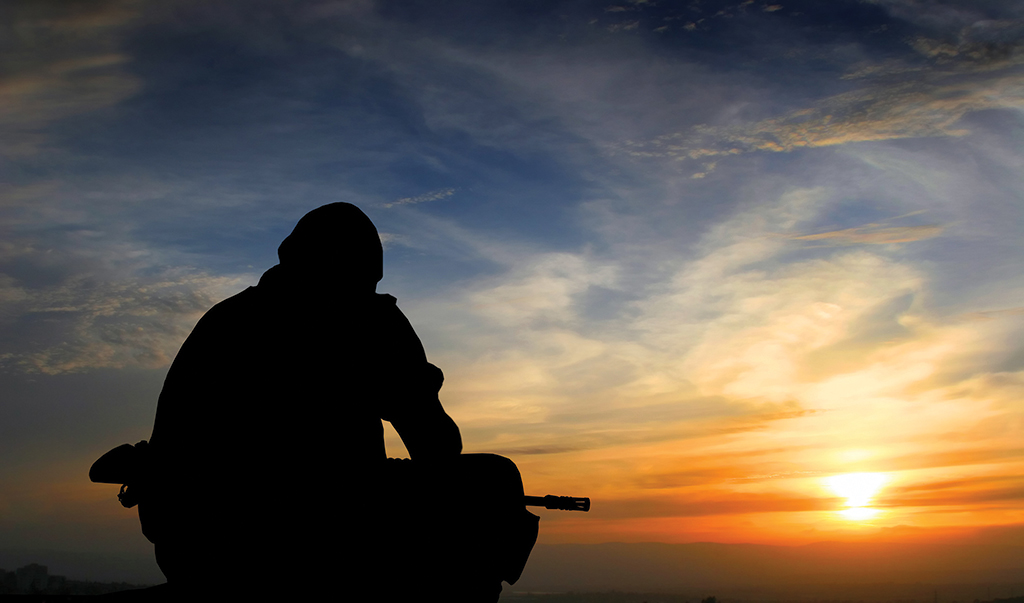
When Buddhist-based contemplative practices burgeoned in popularity in the United States and Europe during the 1950s and 60s, their central tenets were often disregarded in universities as New Age frivolity. Departments of religion and philosophy made some allowances for their study, but the same open-mindedness rarely occurred in “respectable” laboratories of psychology, cognitive science, or neuroscience.
Since then, a major shift has occurred, and the question is no longer about the scientific value of contemplative studies but instead on how they should be implemented. Should public schools be teaching meditation? Should prisons? Corporations? Why or why not? What are the major differences, if any, between learning how to meditate in a Zen center versus being taught mindfulness by a human resources manager? And what about the military?
In 2012, Mind & Life hosted a panel discussion at the International Symposium for Contemplative Studies titled “The Ethics of Teaching Contemplative Practices to the Armed Forces.” The panel discussed whether such practices could (or should) be introduced to individuals or institutions directly involved in violent activities. It’s a nuanced ethical quandary, which is often reduced to two perspectives: The first believes that everyone ultimately benefits from such practices, regardless of context, while the other maintains that the practices are tools prone to misuse outside of a nonviolent, prosocial framework.
In other words, if you believe that these practices grant everybody equanimity and insight into the nature of universal suffering, then you might support bringing contemplation to soldiers. If, on the other hand, you believe contemplative practices can enhance attention and emotional resilience in support of questionable goals, you may find its practice in war zones to be deeply flawed.
In 1997, American author Brian Victoria made a major contribution to this debate with his book Zen at War. The book describes the “bastardization” of Zen philosophy during World War II, when the philosophy was used to revive in Japanese soldiers the “warrior culture established by the early shoguns.” Sawaki Kodo, a Japanese Soto Zen patriarch who had served on the Russian front, made it clear to military leaders that “if killing is done without thinking, in a state of no-mind or no-self, then the act is an expression of enlightenment.” After the book’s publication, Zen leaders and groups in Japan and the U.S. disseminated apologies to shocked practitioners and scholars who felt betrayed by this application of Zen beliefs.
The self-denying egolessness prized by Zen and related schools refers back to the Buddhist concept of anatta, or no-self. Anatta is often understood as the idea that there is no enduring or fixed entity; that there is nothing permanent associated with the mind or body that exists during life or after death. Instead, we exist in a perpetual state of groundless “becoming.” Buddhist thinkers tend to question or outright reject the existence of a soul or independent “I,” and deny a permanent individual essence.
Victoria’s book describes how Japanese military trainers developed the self-denying egolessness anatta describes—and that Zen prizes—into a form of “fascist mind-control.” Through it, they justified collective martyrdom, and by romanticizing the connection between Zen and the samurai’s warrior ethos, they validated the killing of enemies. The trainers also emphasized a link between Buddhist notions of compassion and the deliverance of a swift, merciful death. Coupled with practiced focus and attention training, this type of military training produced highly motivated, “in-the-zone” soldiers able to overcome fear and disregard the threat of imminent death. According to Victoria, “in Zen, there was the promise that there was no difference between life and death, so you really haven’t lost anything.”
Dr. Elizabeth Stanley of Georgetown University is one researcher implementing meditation in the military. Her program—Mindfulness-Based Mind Fitness Training (MMFT)—is a multi-week mental health training tested in both military and civilian populations. For Stanley, war has become an important, appropriate research setting for mindfulness for two reasons.
The first stems from a concern over the mental health of soldiers.
There is a very real demand for, and a grossly lacking supply of, mental health care for veterans: 30–50 percent of returning National Guard reservists, soldiers, and Marines report some form of mental distress (the real percentage is no doubt higher due to mental health stigmas). Further, the Marine Corps suicide rate in January of 2009 was the highest ever recorded within that branch, and a 2009 Joint Force Quarterly article stated that “post-traumatic stress disorder (PTSD), substance abuse, divorce, domestic violence, and murder within the [armed] forces are on the rise.”
These ills travel abroad inside the bodies and minds of soldiers in combat and are transmitted back into the societies that deployed them, straining the bank accounts and empathic capacities of families, friends, and government institutions. In other words, they suffer, and so do we. The hope is that contemplative resiliency programs can help mitigate these effects, and empirical studies have consistently shown that they do.
But war as a research setting has another value to scientists like Stanley.
Dr. Amishi Jha, a University of Miami professor of psychology and Mind & Life Fellow who has studied the effects of Dr. Stanley’s MMFT program, said in a 2010 interview that “other than pregnant women or people who are about to enter chemotherapy, there are very few contexts [like military deployment] in which a known high-stress event [is guaranteed to happen] and its timeframe is known.” It is those two definitive variables that allow scientists to draw more conclusive data about the effectiveness of meditative practice for groups that undergo it and those groups who do not, lending the science true meaning and integrity.
From the perspective of a traumatized soldier or a policy maker worried about the long-term effectiveness of her country’s troops, programs like Stanley’s are obviously beneficial. But within contemplative communities that espouse certain ethical orientations, they remain problematic. While the language of today’s military contemplative programs are plainly different from those of early 20th century Japan, opponents of the military use of meditation claim that some contemplative practices can become the means to improve a soldier’s killing capabilities.
When asked whether she had encountered any ethical opposition to her research from contemplatives in the United States or abroad, Jha said that plenty of instructors and authors had voiced their disapproval but that, tongue in cheek, she didn’t “want to name names of our ‘enemies.’”
Some protestors may concede that “it’s okay to offer [contemplative training] post-deployment after damages occur,” but that ultimately more damage may be done if meditation is incorporated into pre-deployment training by “making [soldiers] concentrated robots.”
One of Jha’s counterarguments to this notion is that, because both the majority of soldiers currently deployed and those participating in the study are on their third or fourth deployments, “that line is instantly blurred, of what is pre- and what is post-.” She also claims that it is incorrect to assume that the contemplative training is “devoid of an ethical container,” though she did not elaborate on its nature.
In my interview with her, Jha recounted an anecdote that had been relayed to her by an Army commander. A convoy was leaving a town in Iraq. The last vehicle in the convoy was a tank with a gunner. As the convoy drove away, the gunner saw it come under fire. The rules of engagement state that when fired upon, a soldier determines the source of the attack and fires back. This gunner did not shoot. The commander stopped the convoy farther down the road, marched up to the tank, and demanded to know why he had not returned fire. The gunner said, “Sir, the figure was too small.” He had made the call not to fire his gun at what turned out to be a child.
It is difficult for any of us to act against our behavioral conditioning. After millions of years of evolution, we have developed highly sophisticated mechanisms for self-defense. This becomes even more true for those who have gone through the type of rigorous military training that prepares the body to “fight” rather than “flight.” However, the gunner’s tale is a clear example of an individual having enough emotional self-regulation to be able to follow an ethical code of conduct in a high-stress situation.
Given that “soldiers who screened positive for mental health problems after returning home were up to three times more likely to report having engaged in unethical behavior while deployed,” it remains an open, and interesting, question as to whether soldiers would benefit from having more contemplative resources to make an already morally ambiguous situation a little less so.


